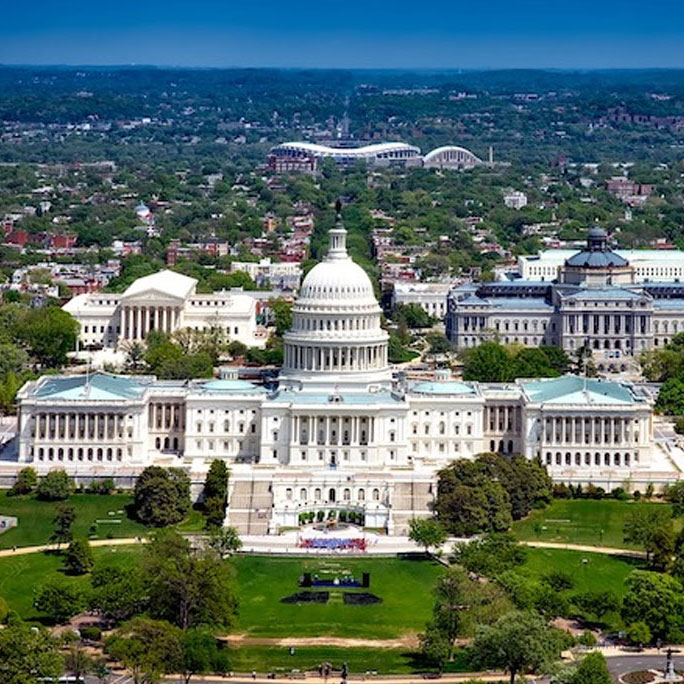Key CARES Act Provisions
By: Mark Micali
This post was updated on 4/23/20 when the additional aid bill was approved by Congress.
Printable version available here.
On Friday, March 27th, after passage by the Senate and House, the President signed into law the Coronavirus Aid, Relief, and Economic Security Act (CARES Act). This largest financial aid package in U.S. history provides $2.2 Trillion of aid to help meet the challenge of the coronavirus. Then on April 23rd, Congress enacted a second major aid package with funding of $480 Billion.
Among the provisions of the second aid package important to TNPA membership is:
Additional Funding for Employer Support for 501(c)3’s and Small Businesses
Similar to the CARES Act, this new package adds a loan forgiveness provision of $310 Billion open to companies and 501(c)3 organizations, supplementing the $350 Billion in the original CARES Act which has already been exhausted. The new loan forgiveness provision will set aside $60 Billion of the $310 Billion for small lenders and community banks to facilitate more lending to minority-owned entities, women-owned entities, and under-served areas.
Beyond these changes, the provisions of the Small Business Loan Forgiveness Program remain largely the same as they were in the original CARES Act:
Employer Support for 501(c)3’s and Small Businesses
Small Business Loan Forgiveness – Businesses and 501(c)3 nonprofit organizations with 500 employees or fewer can receive financial aid to maintain employment of employees earning $100,000/year or less, or the first $100,000 of compensation for employees earning above that annual threshold, through a program of loan forgiveness — in essence, turning a loan into a grant. Eligible organizations can apply for a Small Business Administration-approved loan up to the lesser of $10 million or 250% of their average monthly payroll for the last 12 months.
These loans can be applied to payroll, health insurance, mortgage, rent, and utility costs. Loan forgiveness on “non-employee” costs (mortgages, rent, and utilities) cannot exceed 25% of the total loan. If any portion of the loan does not qualify for forgiveness, the remaining balance can be repaid over up to a 10-year period, at an interest rate no higher than 4%, with no interest or principal due for six months after the loan proceeds have been received. A Small Business Administration-approved loan can be taken out from any of the 1,800 banks (including all large banks) and credit unions approved to make SBA loans. Additionally, Treasury Secretary Mnuchin has stated that all FDIC-insured banks will be eligible to offer these new SBA loans, if they choose to participate in the program.
The overall thrust of the SBA Loan Forgiveness Program is to retain as many employees as possible and to receive credit for rehiring employees who earn $100,000/year or less. Important conditions to this provision include:
- Organizations may reduce wages for employees making less than $100,000/year up to 25%, without reducing the level of loan forgiveness. However, if wages are reduced more than 25% for these employees, the amount of loan forgiveness will be reduced.
- The amount of SBA loan forgiveness will be reduced for organizations that lay off employees during the first eight weeks following receipt of an SBA loan.
- If an organization rehires employees after receiving an SBA loan and the employees are compensated at $100,000/year or less, the organization will receive an additional credit to cover the wages of these rehired employees.
Emergency Economic Injury Grants – This provision is open to businesses and 501(c)3’s that apply for small business loan forgiveness as noted above. An organization may receive up to $10,000 as an advance against the loan requested within three days of applying – as long as the SBA certifies that the organization is eligible, with eligibility based on the organization’s credit score.
Deferral of Employer Payroll Taxes – Employers can delay the payment of payroll taxes for calendar year 2020, with 50% of the employer payroll taxes due December 31, 2021. The remaining 50% of the employer’s portion for 2020 payroll taxes will be due December 31, 2022. Importantly: This delay in employer payroll tax payment is not open to organizations which have received loan forgiveness on a Small Business Administration-approved loan.
Additional provisions of the package important to TNPA membership are:
Tax Benefits to Donors
Universal Charitable Deduction – The legislation includes a charitable deduction for calendar 2020 – capped at $300 – open to all taxpayers, regardless of their income. This deduction may be taken in addition to the standard deduction for taxpayers who do not itemize on their 2020 taxes. Donations to donor advised funds will not be eligible for this deduction.
Raising the Limitation on Charitable Deductions – This provision incentivizes wealthier taxpayers and corporations to increase their giving at this time of enormous need. The adjusted gross income cap for individual taxpayers will be suspended, increasing the cap from 60% of adjusted gross income to 100%. For corporations the cap will be raised from 10% of taxable income to 25% of taxable income. For food donations, the corporate cap has been raised from 15% to 25% of taxable income.
Public Service Loan Forgiveness Credit
Public Service Loan Forgiveness – College graduates with student debt that are making payments while working at a 501(c)3 will still be able to count federal student loan payments that have been temporarily paused toward their ten-year payment term.



